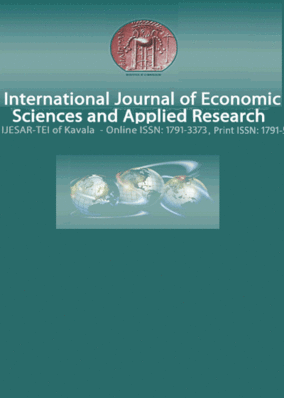Internet addiction among Greek university students : demographic associations with the phenomenon, using the Greek version of young’s Internet addiction test
Part of : International journal of economic sciences and applied research ; Vol.3, No.1, 2010, pages 49-74
Issue:
Pages:
49-74
Abstract:
Internet addiction (IA) is a new disorder described in 1996 by the psychologist Kimberly Young. The aim of this paper is to estimate the percentage of IA among Greek university students. Results of a sample survey among 1876 Greek university students, 18-27 years old, are presented. The questionnaire consisted of eight questions from Young ’s Diagnostic Test for Internet Addiction (YDTIA) as well as an inventory including demographic factors and questions about academic performance, computer and Internet use. YDTIA had a good reliability and diagnostic accuracy, tested with Cronbach ’s alpha (0.71) and sensitivity analysis. Results show that the percentage of IA (5-8 YDTIA criteria) is 11.6%, while problematic Internet users were (3-8 YDTIA criteria) 34.7%. Men were more likely to be addicted to the Internet than women, and Internet addicted students were associated with poorer academic performance. Multiple logistic regression showed that significant predictors of IA included increased hours of daily Internet use, increased hours visiting chat rooms, sex pages and blogs, male gender, divorced status, poor grades, and accessing the Internet outside of the home. The results of this study will allow health officials to recognise students who are Internet addicted or on the verge of becoming addicted and stress risk factors indicating a need for intervention in order to prevent the appearance of I A.
Subject (LC):
Keywords:
Greece, university students, Internet addiction, gender, academic performance, sex pages
Notes:
Περιέχει πίνακες και βιβλιογραφία




